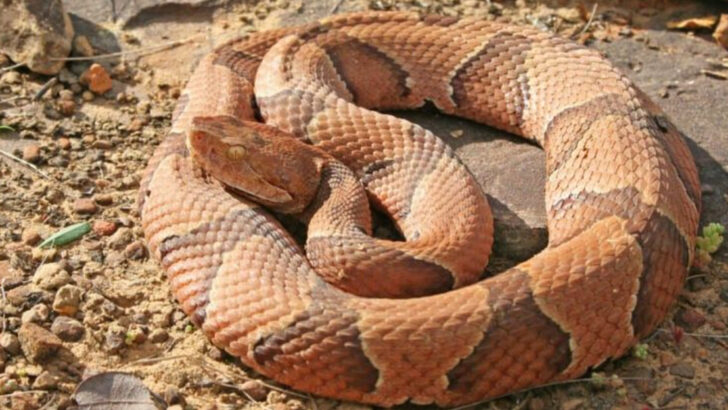They’re not fast. They’re not huge. But they bite—hard. Copperheads are the masters of stealth in the snake world, often hiding in plain sight until it’s too late. Lurking beneath logs, coiled in fallen leaves, or stretched across hiking paths, they don’t flee. They freeze. And that’s exactly what makes them dangerous. From the damp woodlands of the Carolinas to the sun-drenched trails of Texas, copperheads are thriving—and they’re not going anywhere. If you spend time outdoors in any of these 17 states, you could be closer to one than you think. Whether you hike, camp, garden, or just walk your dog at dusk, this is the venomous neighbor you need to know. Not to panic—but to prepare. Let’s take a look at where copperheads dominate and what smart outdoor folks do to avoid becoming a target.
Texas
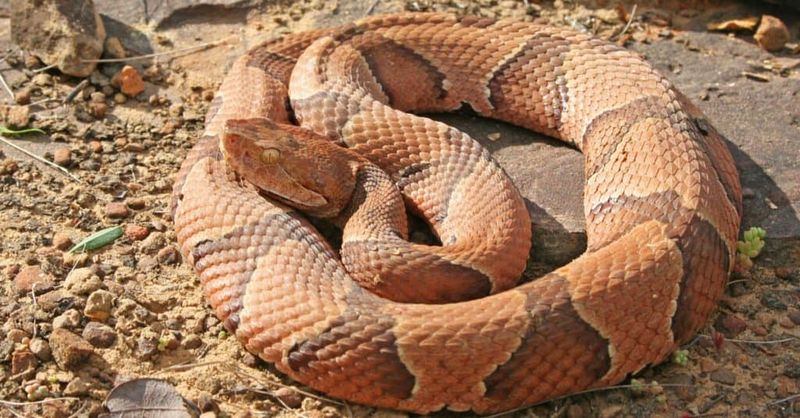
In the vast landscapes of Texas, copperheads find plenty of places to thrive. The Texas terrain, with its mix of forests, meadows, and open spaces, provides a perfect habitat for these snakes. Whether you’re hiking in the Piney Woods or exploring the Hill Country, be mindful of where you step. Copperheads often blend into their surroundings, making them hard to spot. Interestingly, they are known to be more active at night. Always carry a flashlight during evening treks to avoid unwanted surprises. Remember, though venomous, copperheads are generally non-aggressive unless provoked.
Oklahoma
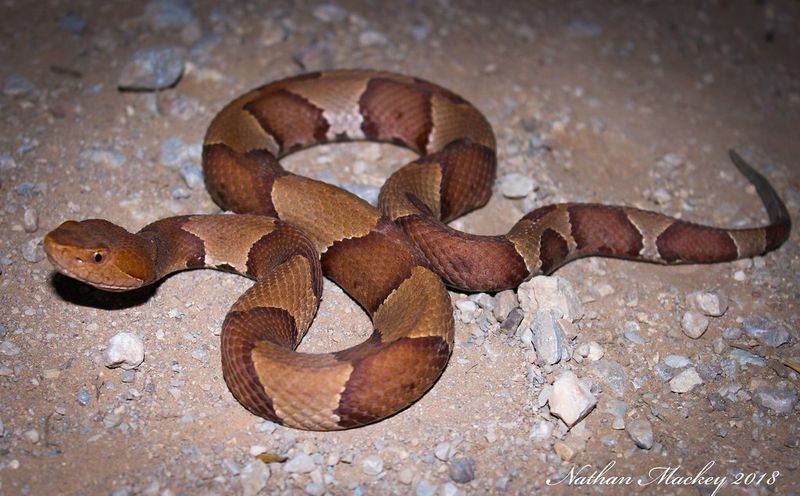
Oklahoma’s diverse landscape offers a welcoming environment for copperheads. From the rolling prairies to wooded areas, these snakes are well-adapted to the region. The state’s warm climate and abundant prey make it an ideal home for them. When trekking through the Wichita Mountains or camping in local parks, keep an eye out for these elusive creatures. Copperheads in Oklahoma can often be seen basking in the sun during the cooler parts of the day. Their distinctive hourglass pattern helps them blend seamlessly into the surroundings, posing a challenge for the unwary.
Missouri
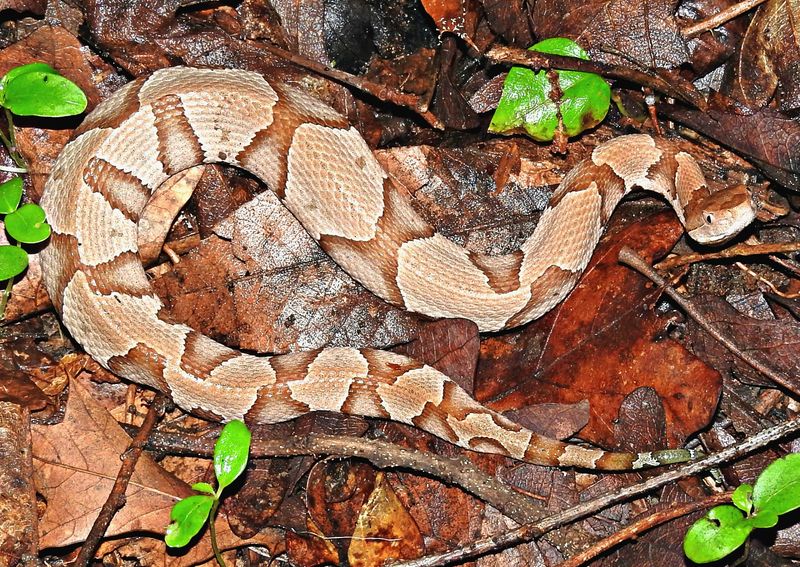
Missouri’s rich, deciduous forests provide a haven for copperheads. These snakes are often found in the southern part of the state, where the Ozarks offer the perfect mix of rocky terrains and wooded cover. As you hike through these beautiful landscapes, be aware that copperheads may be hiding in leaf litter or under logs. They are particularly active in the spring and fall. Always wear sturdy boots and keep to marked paths to minimize encounters. Despite their prevalence, copperheads are a vital part of Missouri’s ecosystem, helping control the rodent population.
Arkansas
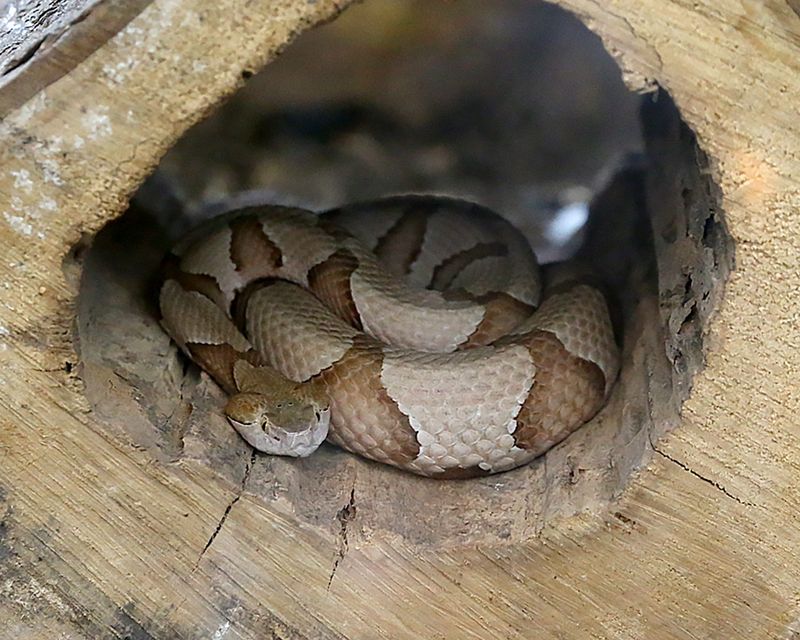
Arkansas, with its dense woods and rolling hills, is prime territory for copperheads. These snakes are frequently found in the Ozark and Ouachita Mountains. Hikers and campers should remain vigilant, especially in shaded areas where copperheads like to seek refuge. Encountering one can be a startling experience, as their camouflage is highly effective against the forest floor. It is worth noting that copperheads in Arkansas are more noticeable during early spring when they emerge from hibernation. They play a crucial role in keeping the local pest population in check.
Kentucky
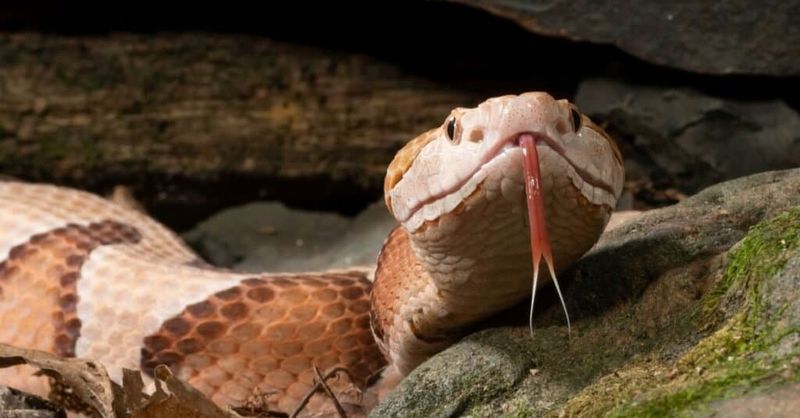
The bluegrass state of Kentucky is another hotspot for copperheads. These snakes favor the rocky outcrops and wooded environments found throughout the region. In particular, the Daniel Boone National Forest is a known habitat. Copperheads here are well-camouflaged and can often be found basking on rocks or hiding in dense foliage. Their presence highlights the state’s rich biodiversity, and while they pose a risk, they are an important part of the natural world. Visitors should stay alert and respect wildlife, ensuring they keep a safe distance if spotting a copperhead.
Tennessee
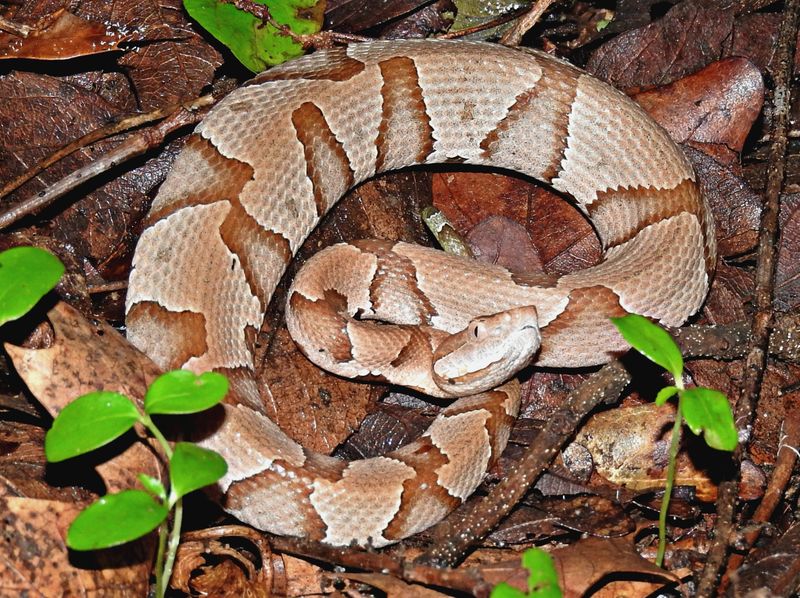
Tennessee’s Smoky Mountains provide an ideal setting for copperheads. The dense forests and humid climate create a perfect environment for these snakes. Nature lovers exploring the trails should be cautious, as copperheads are known for their excellent camouflage amidst the leaf litter. Interestingly, they are less aggressive compared to other venomous snakes, striking only when threatened. Their presence in Tennessee underscores the area’s ecological diversity. Always respect their space, and if you encounter one, it’s best to observe from a distance and let them be on their way.
Virginia
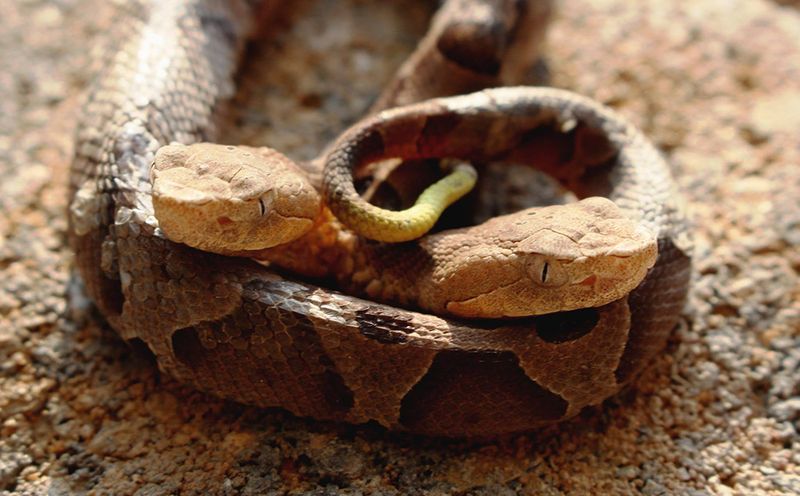
Virginia is home to a substantial population of copperheads, particularly in the Appalachian region. These snakes thrive in the state’s varied landscapes, from wooded hills to riverbanks. The Appalachian Trail is a popular spot where copperheads might be seen. Hikers should be cautious, especially around rocky areas where these snakes often hide. Copperheads are an integral part of Virginia’s ecosystem, controlling pests and maintaining balance. While they are venomous, their bites are rarely fatal to humans. Awareness and caution can ensure a safe and enjoyable outdoor experience.
North Carolina
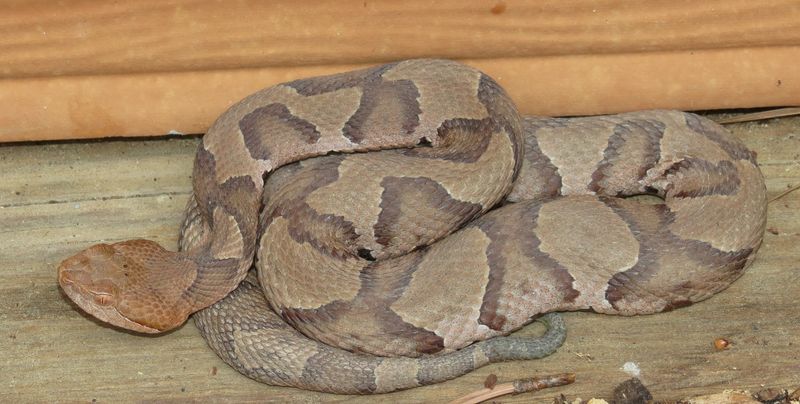
In North Carolina, copperheads are frequently encountered in the Piedmont region. The state’s diverse terrain, ranging from mountains to coastal plains, provides ample habitat for these snakes. Copperheads are often found in suburban areas, making it essential for residents to be cautious. They are particularly active in the late afternoon and early evening. Their cryptic coloration allows them to blend in with fallen leaves and debris. Although copperheads are venomous, they are not aggressive and tend to avoid human interaction. Awareness is key to coexisting with these fascinating creatures.
South Carolina
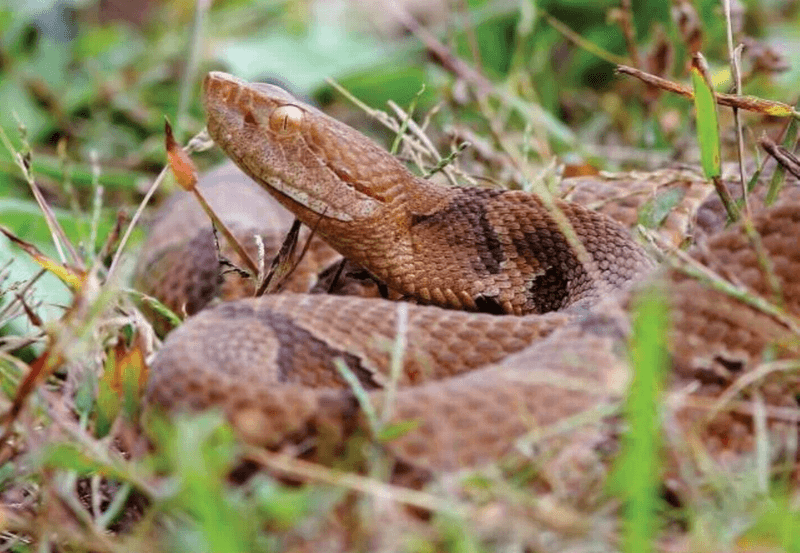
South Carolina’s lowcountry is a familiar haunt for copperheads. The humid, marshy environment suits them well, offering plenty of cover and food sources. These snakes are often seen around gardens and woodpiles, especially during the cooler months. Their presence is a reminder of the rich wildlife that thrives in the region. While they are not aggressive, copperheads will defend themselves if provoked. It’s advisable to watch where you place your hands and feet when outdoors. Understanding their behavior and habitat can lead to peaceful coexistence and appreciation of these reptiles.
Georgia
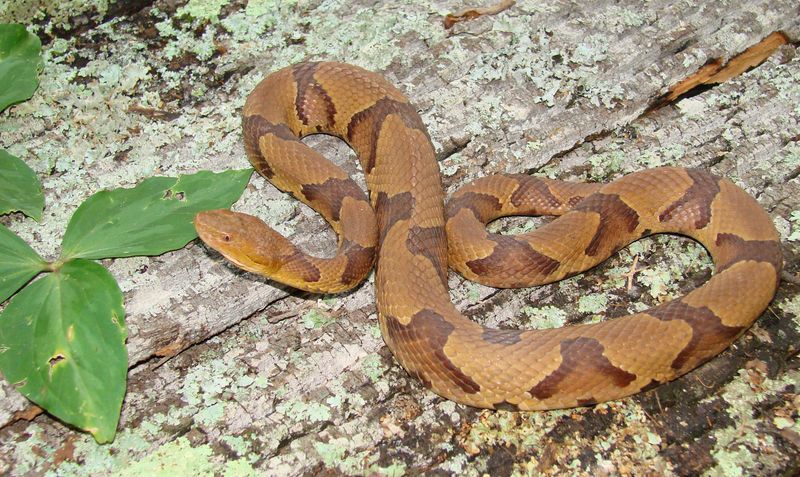
Georgia’s pine forests and swamps are ideal for copperheads. The state’s warm climate and diverse ecosystems support a healthy population of these snakes. Copperheads are often found near water sources, where they hunt for small mammals and amphibians. It’s common to see them in residential areas, so caution is necessary when venturing outdoors. Despite their venom, they are not aggressive and rarely pose a threat if left undisturbed. Their presence in Georgia is a testament to the state’s vibrant wildlife, where every species plays a role in the ecological web.
Alabama
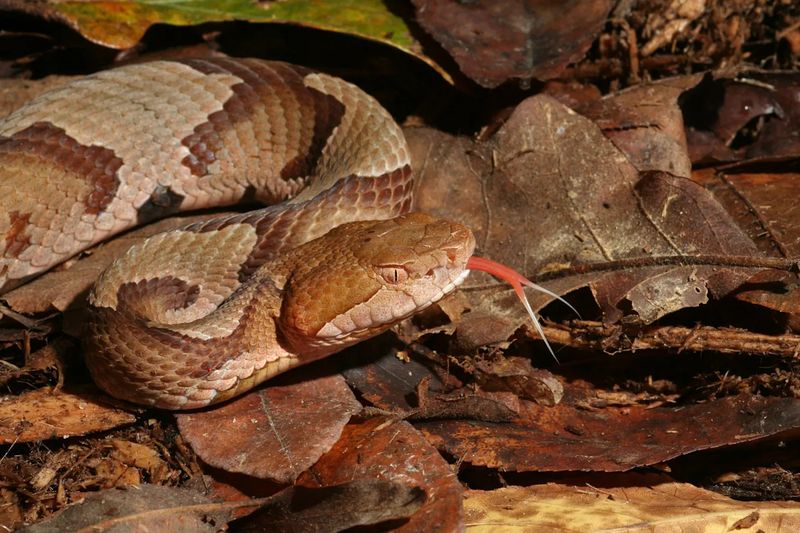
In Alabama, copperheads are a common sight in the woodlands. The state’s rich biodiversity provides an optimal habitat for these snakes. They are especially prevalent in the northern regions, where forests and rivers abound. Copperheads are often spotted near trails and in garden areas, blending into the red clay soil. Their adaptability to different environments makes them resilient inhabitants. While they can be intimidating, understanding their role in the ecosystem helps in appreciating them. For outdoor lovers, staying alert and respecting wildlife will ensure a safe and enriching experience.
Mississippi
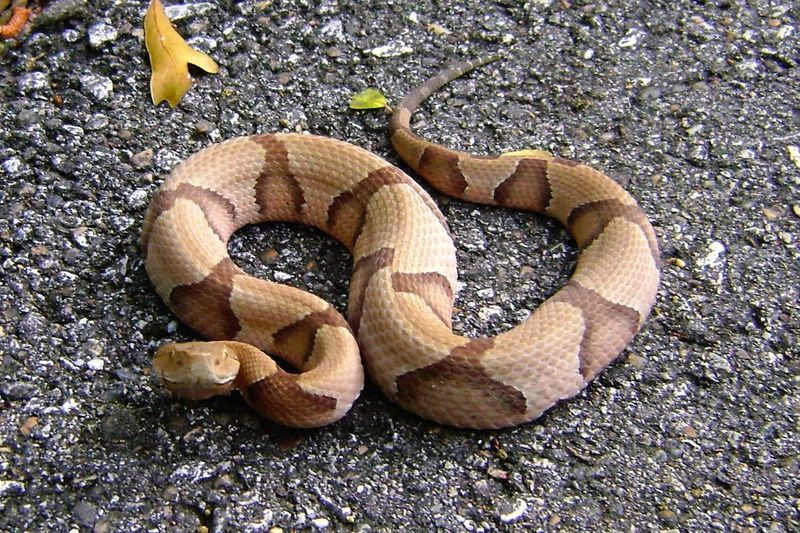
The Mississippi Delta, with its lush vegetation and abundant waterways, is home to many copperheads. These snakes thrive in the humid conditions, often found near rivers and swamps. Their presence is less noticeable due to their excellent camouflage, which helps them hide from both predators and prey. Copperheads play a crucial role in controlling the rodent population, contributing to the ecological balance. When exploring the Delta, it’s wise to keep to marked paths and be aware of your surroundings. Observing these snakes from a distance allows for a safe and fascinating encounter.
Illinois (southern part)
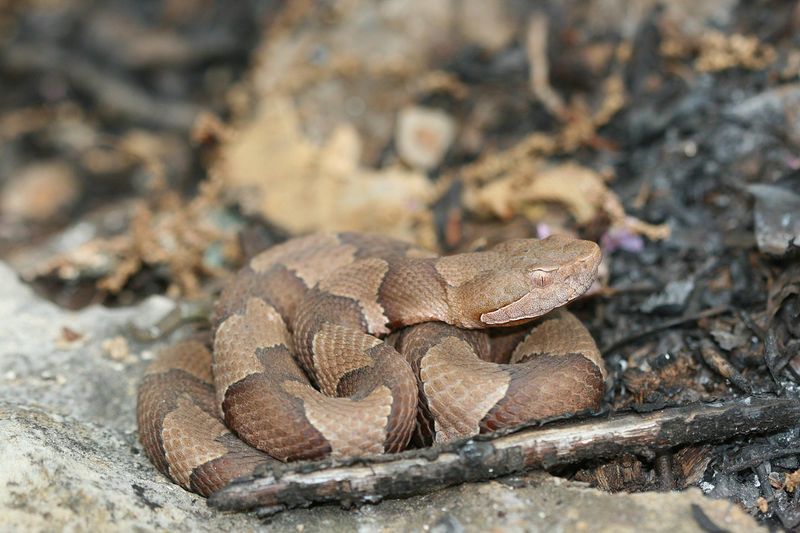
Southern Illinois offers a suitable environment for copperheads, particularly in its forested areas. These snakes are more common in the Shawnee National Forest, where the dense woods and varied terrain provide excellent cover. Copperheads are adept at remaining unseen, their patterns mimicking the fallen leaves. During the warmer months, they are most active and can be seen near trails. Despite their presence, they rarely pose a direct threat to humans unless provoked. Understanding their habitat and habits allows outdoor enthusiasts to enjoy the beauty of southern Illinois safely.
Indiana (southern part)
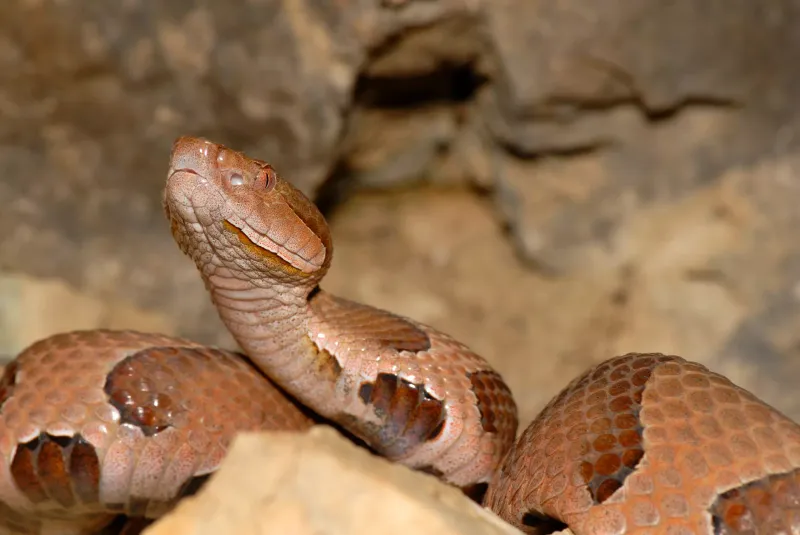
Southern Indiana’s limestone hills and hardwood forests create an ideal setting for copperheads. These areas offer plenty of hiding spots and hunting grounds for the snakes. Copperheads often remain concealed under rocks and logs. During the spring and fall, they are more visible as they seek out the sun’s warmth. For those hiking in places like Hoosier National Forest, it’s important to remain vigilant. Copperheads, though venomous, are an integral part of the local wildlife, and observing them from a respectful distance ensures safety for both humans and snakes.
Pennsylvania
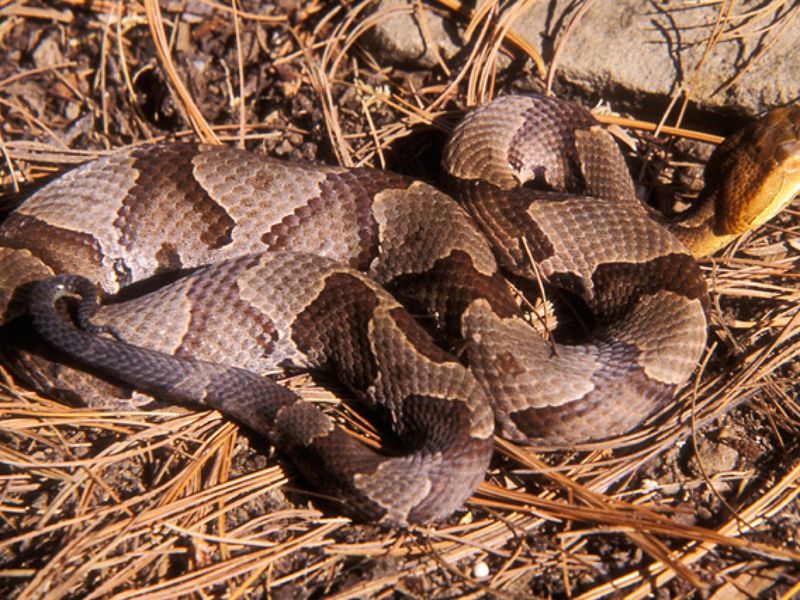
In Pennsylvania, copperheads are primarily found in the state’s southern regions. The woodlands and rocky outcrops offer a perfect habitat for these snakes. Particularly along the Appalachian Mountains, copperheads are a familiar sight. Their presence emphasizes the rich biodiversity of the area. Hikers and nature lovers should be cautious, especially in the warmer months when copperheads are more active. It’s essential to stay on trails and avoid reaching into unseen areas. Copperheads add to the ecological balance, controlling pest populations and enriching the state’s natural heritage.
West Virginia
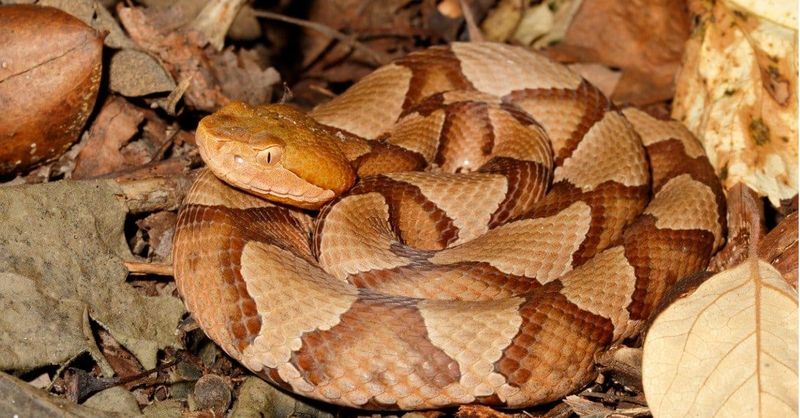
West Virginia’s mountainous terrain is a natural habitat for copperheads. The state’s rich forests and varied elevations provide an ideal environment for these snakes. Copperheads here are often found in rocky and wooded areas. Their distinctive pattern allows them to blend seamlessly with their surroundings. Outdoor enthusiasts should tread carefully, especially in areas like the Monongahela National Forest. While copperheads are venomous, they are not typically aggressive and prefer to avoid human interaction. Observing these snakes from a safe distance allows for an appreciation of their role in the ecosystem.
Louisiana
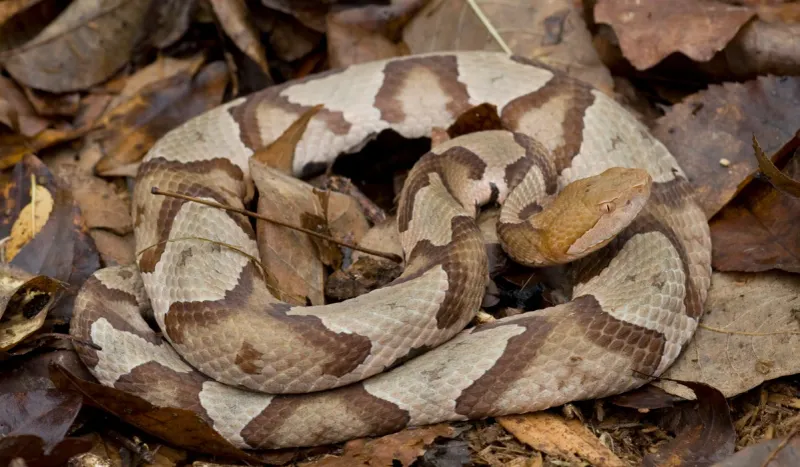
Louisiana’s bayous and swamps are home to a diverse array of wildlife, including copperheads. These snakes thrive in the wet, humid conditions, often found near water sources. Their excellent camouflage makes them difficult to spot, with their coloration blending into the surroundings. Copperheads are vital in maintaining the ecological balance by controlling pest populations. When exploring Louisiana’s natural beauty, always be mindful of where you step. Awareness and respect for wildlife ensure a safe and rewarding outdoor experience. Copperheads, though venomous, are a fascinating part of the state’s rich biodiversity.

